simple mechanisms. Lever (Pobedinsky D.M.)
In this lesson, we will focus on simple mechanisms.
simple mechanisms- these are devices with the help of which work is done only at the expense of mechanical energy. We are surrounded by devices that operate on electricity (see Fig. 1), due to the energy of fuel combustion, but this has not always been the case.
Rice. 1 Electric Kettle
Previously, all the work could actually be done by hand, or with the help of animals, due to the wind or the flow of water (mills), that is, due to mechanical energy (see Fig. 2).
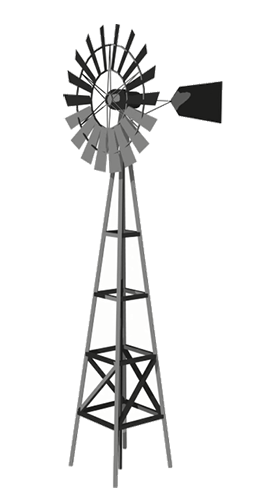
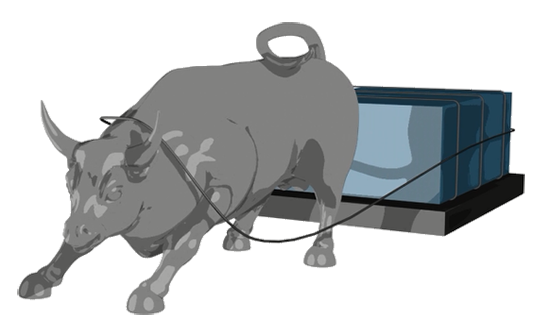

Rice. 2. Old simple mechanisms
And they help in this, facilitate the work, simple mechanisms.
Our forces are limited, and this is a problem. For example, we cannot lift and move a ton of bricks from one place to another at a time. But we can spend more time, go more distance back and forth and move the bricks four at a time, or as many as we can carry. What about a screw that needs to be screwed into a tree? We cannot screw it with our bare hands. Screwing it in piece by piece, like a mountain of bricks brick by brick, is also impossible. You need to use a mechanism, a screwdriver. With it, we have to turn the screw a few turns so that it enters the tree at least a centimeter. But it is incomparably easier than by hand.
Consider such a simple mechanism as, for example, a shovel. Of course, it makes the job easier, it is much easier to dig the ground with it than with your hands. We stuck the shovel into the ground. To raise a clod of earth, you need to press on the handle. Where will you push to make it easier? Experience suggests that it is necessary to press, that is, apply force, closer to the end of the handle (see Fig. 3).
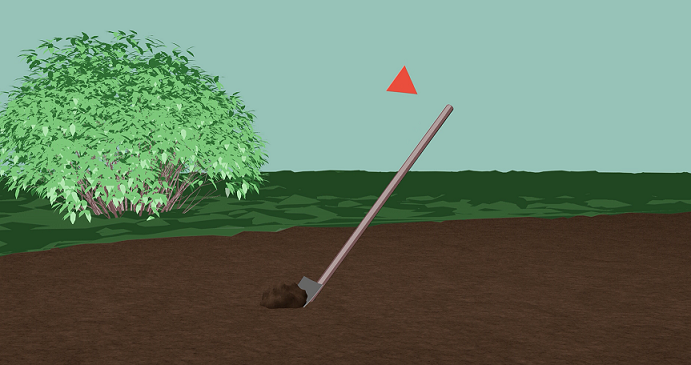
Rice. 3. Choice of the point of application of force
Try to apply force closer to the blade of the shovel, it will become much harder to lift a clod of earth. Applying the same strength, you will not lift anything. That is why shovels with a short handle, for example, sappers, are made with a small canvas: you still can’t lift a lot of earth with a short handle.
The shovel is a lever. A lever is a rigid body with a fixed axis of rotation (most often it is a fulcrum or suspension point). Forces act on it that tend to rotate it around the axis of rotation. In a shovel, the axis of rotation is the fulcrum on the upper edge of the hole (see Fig. 4).
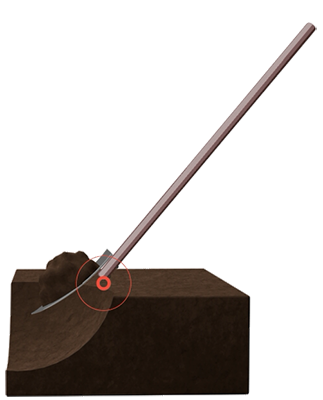
Rice. 4. The axis of rotation of the shovel
A lump of earth, which we lift, acts with some force on the blade of a shovel, and our hands act on the handle, with less force (see Fig. 5).
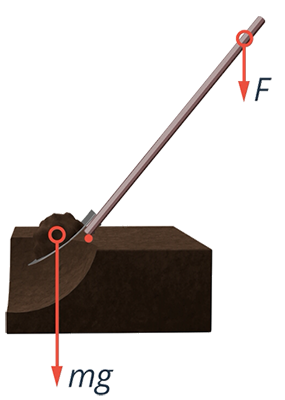
Rice. 5. Action of forces
Consider another example: everyone rode on a swing-balancer (see Fig. 6).

Rice. 6. Swing-balancer
This is also a lever: there is a fixed axis of rotation around which the swing rotates under the influence of children's gravity.
To outweigh your friend, sitting on the opposite seat, to lift him, you will sit on the very edge of the swing. If you sit closer to the swing support, you can not outweigh it. Then you need to put someone adult and heavy in your place (see Fig. 7).

Rice. 7. The applied force must be greater than at the edge
At such a point of application of force, more force is needed than when the force was applied to the edge of the swing (see Fig. 8).

Rice. 8. Application of forces
As you have already noticed, the farther from the fulcrum we apply force, the less force is needed to do the same work. Moreover, the force needed is as many times less, how many times the lever arm is larger. lever arm- this is the distance from the point of support or suspension of the lever to the point of application of force (see Fig. 9).

Rice. 9. Leverage and Strength
Forces will be applied perpendicular to the lever.
Direction of force acting on the lever
In what direction will you act on the shovel to lift the earth? You will apply force to the shovel so that it wraps around the fulcrum, that is, perpendicular to the handle (see Fig. 10).

If you act along the handle, it will not lift the earth, unless you pull the shovel out of the ground or stick it deeper. If you press on the handle at an angle, the force can be thought of as the sum of two forces: you push perpendicular to the handle and simultaneously push or pull along the handle (see Figure 11).

Rice. 11. Action of force along the handle
Only the perpendicular component will rotate the shovel.
So, we have a lever and two forces that act on it: the weight of the load and the force that we apply to lift this load. We have found that the longer the arm of the lever, the less force is needed to balance the lever. Moreover, how many times the lever arm is greater, the force is so much less. Mathematically, this can be written as a proportion:
It does not matter whether the forces are applied on opposite sides of the fulcrum or on one side. In the first case, the lever was called the lever of the first kind (see Fig. 12), and in the second - the lever of the second kind (see Fig. 13).

Rice. 12. Lever of the first kind
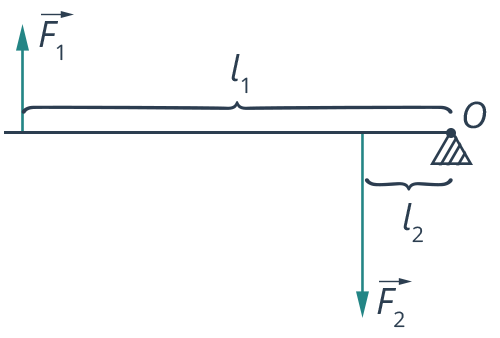
Rice. 13. Lever of the second kind
Working with a shovel
We looked at how the shovel makes it easier for us to dig the ground. It rests on the edge of the formed hole in the ground, this will be the axis of its rotation. The weight of the earth is applied to the short arm of the lever, we apply force to the long arm of the lever with our hands (see Fig. 14).

Rice. 14. Application of forces to the shovel
Moreover, how many times the shoulders of the lever differ, the forces applied to these shoulders differ in the same number of times.
So, we raised the clod of earth, but then you need to take the shovel with both hands, lift it completely and move the earth. Where do we take the handle of the shovel with the second hand? Everything is simple when we already know the principle of the lever. The second hand will become the new lever support. It must be positioned so as to again give a gain in strength, it must again divide the lever into short and long arms. Therefore, we will take the shovel as close as possible to the blade of the shovel. Try to lift the shovel by holding the edge with both hands - you may not succeed even with an empty shovel.
The principle by which the lever works is used very often. For example, pliers are a lever of the first kind (see Fig. 15). We act on the handles of the pliers with a force , and the pliers act on a piece of wire, tube or nut with a force much greater in modulus than . So many times more, how many times more:

Rice. 15. An example of a lever of the first kind
Another lever is a can opener, only now the application points are on one side of the fulcrum O. And again we apply force to the handle, and the opener blade acts on the tin of the can with a much greater force in modulus (see Fig. 16).
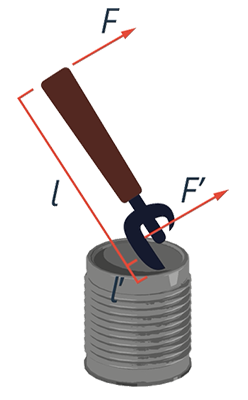
Rice. 16. An example of a lever of the second kind
How many times more than? In the same amount, how many times more than:
The gain in strength can be huge, we are limited only by the length of the lever and its strength.
Let's calculate how long the lever should be so that with its help a fragile girl weighing 50 kg can lift a car weighing 1500 kg by pressing on the lever with all her weight. Let's place the fulcrum of the lever so that the short arm of the lever is 1 m (see Fig. 17).

Rice. 17. Drawing for the problem
The problem describes a lever (see Fig. 18).
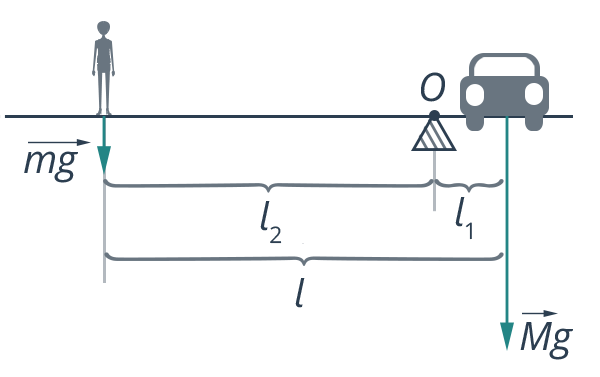
Rice. 18. Condition of task 1
We know how many times the gain in strength gives leverage:
Forces are applied on opposite sides of the lever support, so the two arms of the lever will add up to its length:
We have described mathematically the process specified in the condition. In our case, the force acting on the shoulder is the weight of the car, and the force acting on the shoulder is the weight of the girl.
Now it remains only to solve the equations and find the answer.
From the first equation we find the shoulder. The greater force is applied to the smaller lever arm, which means that this is the short arm equal to 1 m.
![]()
![]()
The length of the lever is:
Answer: 31 m.
How does a shovel dig itself?
Considering the examples, we did not take into account the force of gravity acting on the lever.
Imagine that we stuck a shovel shallowly into the ground. If the shovel is heavy enough, it will be able to lift a small mass of earth without our help, we will not even need to apply any force to the handle. The shovel will rotate around the axis of rotation under the action of gravity acting on the shovel handle (see Fig. 19).

Rice. 19. Turning a shovel around its axis
However, most often the weight of the lever is negligible compared to the forces that act on it, so in our model we consider the lever to be weightless.
In the example of a girl and a car, we saw that with the help of a lever we can do a job that we would never have done without a lever. With the help of a lever, even the Earth could be moved, as Archimedes spoke of (see Fig. 20).
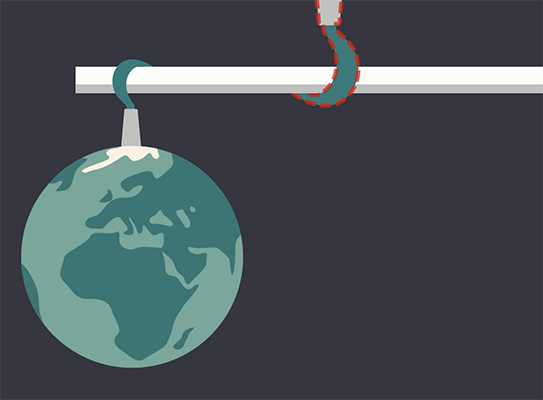
Rice. 20. Assumption of Archimedes
The problem is that there is nothing to rest the lever on, there is no suitable fulcrum. And you, of course, imagine what an unimaginable length such a lever must be, because the mass of the Earth is 5974 billion billion tons.
Everything works too well: we can reduce the force necessary to do the work almost indefinitely. There must be a catch, otherwise with leverage our possibilities would be endless. What's the catch?
Using a lever, we apply less force, but at the same time we make a greater displacement (see Fig. 21).
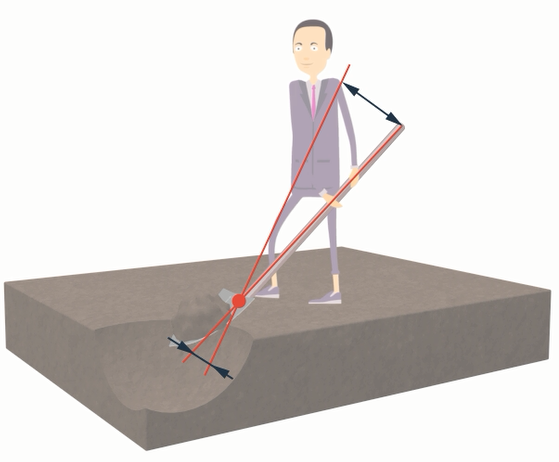
Rice. 21. Moving increases
We moved the shovel handle to our outstretched hand, but raised the earth only a few centimeters. Archimedes, if he still found a fulcrum, in his entire life would not have had time to turn his lever so as to move the Earth. The less force we apply, the more displacement we make. And the product of force and displacement, that is, work, remains constant. That is, the lever gives a gain in strength, but a loss in movement, or vice versa.
Levers that are used "in reverse"
Leverage is not always used to do work with less force. Sometimes it is important to win in the move, even if it means applying more force. So does the fisherman who needs to pull the fish, move it to long distance. At the same time, he uses the fishing rod as a lever, applying force to its short shoulder (see Fig. 22).

Rice. 22. Using a fishing rod
Our hand is also a lever. The muscles of the arm contract and the arm bends at the elbow. At the same time, she can lift some load, do work. At the same time, muscles and loads act with some forces on the bones of the forearm (see Fig. 23).
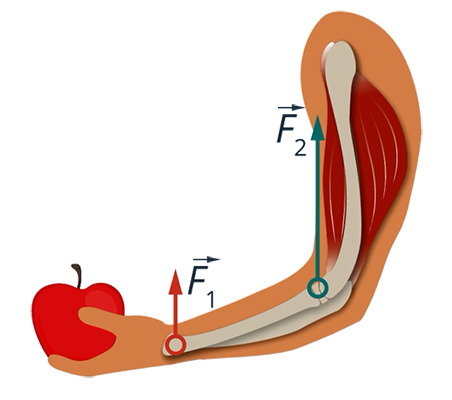
Rice. 23. Our hand is a lever
The axis of rotation of the forearm is the elbow joint. Our entire musculoskeletal system consists of such levers. And the term "lever arm" itself is named so by analogy with the shoulder of one of the levers in our body - the arm.
Muscles are arranged in such a way that during contraction they cannot shorten by those half a meter by which we need to raise, for example, a cup of tea. You need to win in movement, so the muscles are attached closer to the joint, to the smaller arm of the lever. In this case, you need to apply more force, but for the muscles this is not a problem.
The lever is not the only simple mechanism that makes it easier for us to get the job done.
What simple mechanism do you use when you go up to the first floor? You can jump to the window if you can, and just climb into the room. We are accustomed to doing the same job of moving ourselves home much safer and easier - climbing stairs. So we make a greater path, but apply less force to ourselves. If we make a long gentle staircase, it will become even easier to climb, we will walk almost as if on a flat surface, but we will have to make a longer path (see Fig. 24).

Rice. 24. Gentle staircase
The inclined plane is a simple mechanism. It is always easier not to lift something heavy, but to drag it down a slope.
Consider how an ax splits wood. Its blade is pointed and expands closer to the base, and the deeper the wedge of the ax is driven into the wood, the wider it is distributed and eventually splits (see Fig. 25).
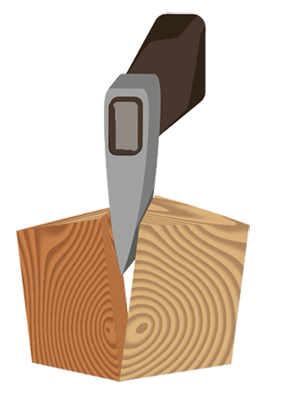
Rice. 25. Wood cutting
The principle of operation of the wedge is the same as for inclined plane. To push the pieces of wood a centimeter, you would need to apply a huge force. It is enough to apply less force to the wedge, however, it will be necessary to make a greater movement deep into the wood.
Screws work on the same principle of an inclined plane. Let's take a closer look at the screw: the groove along the screw is an inclined plane, only wrapped around the screw shaft (see Fig. 26).

Rice. 26. Inclined plane of the screw
And we also effortlessly drive the screw to the depth we need. At the same time, as usual, we lose in movement: we need to make many turns of the screw in order to drive it a couple of centimeters. In any case, it is better than pushing the wood and inserting a screw into it.
When we screw in a screw with a screwdriver, we make our work even easier: the screwdriver is a lever. Look: the force with which the screw acts on the tip of the screwdriver is applied to the smaller arm of the lever, and we act on the larger arm with our own hand (see Fig. 27).

Rice. 27. The principle of the screwdriver
The handle of a screwdriver is thicker than the tip. If the screwdriver had handles like a corkscrew, the gain in strength would be even greater.
We use simple mechanisms so often that we don't even notice it. Let's take an ordinary door. Can you name three uses for a simple mechanism in a door?
Notice where the handle is. It is always located at the edge of the door, away from the hinges (see Fig. 28).

Rice. 28. Location of the handle on the door
Try to open or close the door by pushing it closer to the hinges, it will be difficult. The door is a lever, and in order to open the door with as little force as possible, the arm of this force should be as large as possible.
Let's take a look at the handle itself. If it was a bare axle, it would be difficult to open the door. The handle increases the arm to which the force is applied, and we, applying less force, open the door (see Fig. 29).
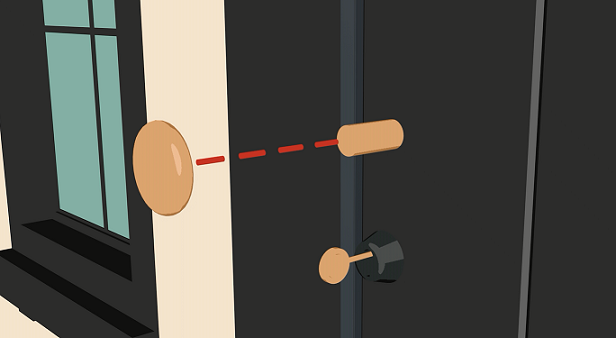
Rice. 29. Door handle
Let's look at the shape of the key. I think you can answer why they are made with wide heads. And why are the hinges on which the door rests not located next to each other, but about a quarter of the height from the edges of the door? Remember how we took a shovel when we picked it up - the same principle here. And you can also pay attention to the lock tongue cut at an angle, to the screws with which the door is screwed to the hinges (see Fig. 30).
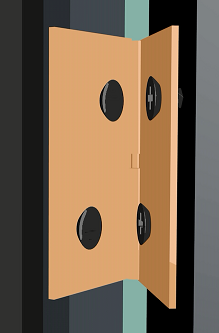
Rice. 30. Door hinges
As you can see, simple mechanisms underlie all kinds of devices - from a door and an ax to a crane. We use them unconsciously when we choose, for example, where to grab a branch to tilt it. Nature itself, when creating a person, used simple mechanisms when it created our musculoskeletal system or teeth with their wedge-shaped shape. And if you pay attention, you will notice many more examples of how simple mechanisms make it easier to mechanical work and you can use them even more effectively.
This concludes our lesson, thank you for your attention!
Bibliography
- Sokolovich Yu.A., Bogdanova GS Physics: A Handbook with Examples of Problem Solving. - 2nd edition, redistribution. - X .: Vesta: Publishing house "Ranok", 2005. - 464 p.
- Peryshkin A.V. Physics: Textbook Grade 7. - M.: 2006. - 192 p.
- Virtuallab.by().
- School.xvatit.com().
- Lena24.rf ().
- Fizika.ru ().
Homework
- What is a lever? Give a definition.
- What examples of leverage do you know?
- The length of the smaller arm of the lever is 5 cm, the larger is 30 cm. A force of 12 N acts on the smaller arm. What force must be applied to the larger arm in order to balance the lever?
The simplest mechanisms of the device, which serve to transform the force. They are elements of more complex mechanisms. Some of the simplest mechanisms appeared in ancient times. It is customary to distinguish six simple mechanisms: Wheel; Inclined plane; Wedge; Screw; Lever arm; Gate; Block

The wheel is round (as a rule), a freely rotating or fixed disc on the axle, allowing the body placed on it to roll rather than slide. The wheel is widely used in various mechanisms and tools. Widely used for cargo transportation.

The wheel significantly reduces the energy costs for moving the load on a relatively flat surface. When using a wheel, work is done against the rolling friction force, which under artificial road conditions is significantly less than the sliding friction force. Wheels can be solid (for example, a wheel pair of a railway car) and consisting of a fairly large number of parts, for example, a car wheel includes a disk, rim, tire, sometimes a camera, mounting bolts, etc. Car tire wear is almost a solved problem (with properly set wheel angles). Modern tires drive more than 1000 km. An unresolved problem is tire wear on aircraft wheels. When a stationary wheel comes into contact with the concrete surface of the runway at a speed of several hundred kilometers per hour, tire wear is enormous.
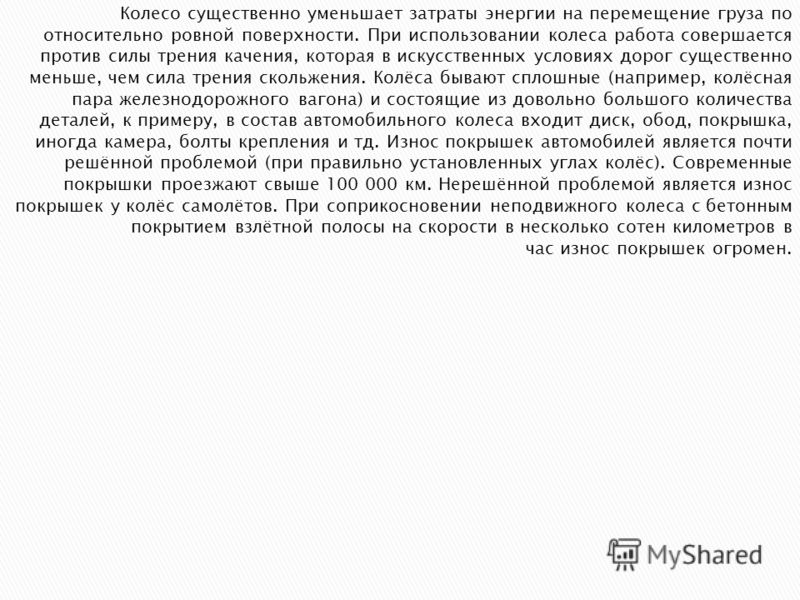
In July 2001, an innovative patent was obtained for the wheel with the following wording: "a round device used for transporting goods." This patent was issued to John Cao, a lawyer from Melbourne, who wanted to show the imperfection of the Australian patent law. The French company Michelin in 2009 developed a mass-produced Active Wheel with built-in electric motors that drive the wheel, spring, shock absorber and brake. Thus, these wheels make the following vehicle systems unnecessary: engine, clutch, gearbox, differential, drive and cardan shafts. In 1959, the American A. Sfredd received a patent for a square wheel. It easily walked through snow, sand, mud, overcame pits. Contrary to fears, the car on such wheels did not "limp" and developed a speed of up to 60 km / h.



Ramps, or inclined planes, were widely used in the construction of early stone structures, roads, and aqueducts. They were also used during the assault on military fortifications. Experiments with inclined planes helped medieval physicists (such as Galileo Galilei) to study the laws of nature related to gravity, mass, acceleration, etc.


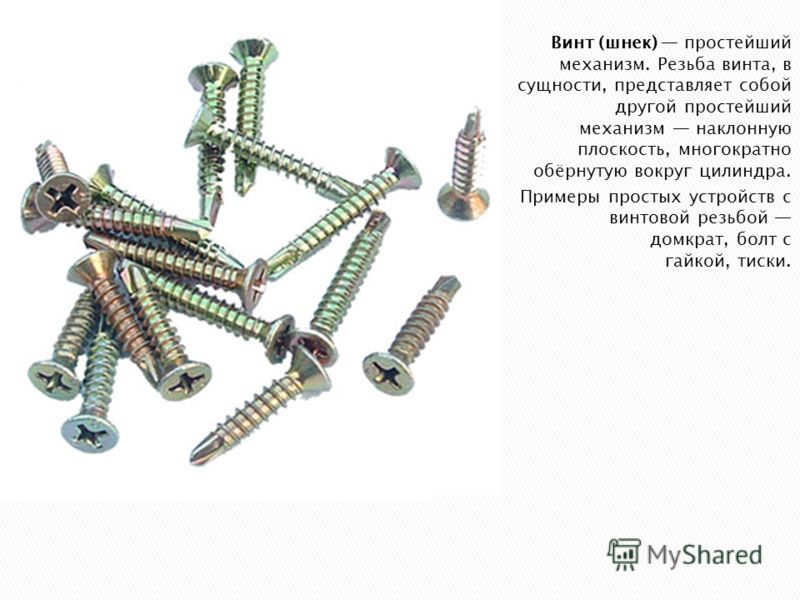

The lever is the simplest mechanical device, which is solid(crossbar) rotating around the fulcrum. The sides of the crossbar on the sides of the fulcrum are called the arms of the lever. The lever is used to get more force on the short arm with less force on the long arm (or to get more movement on the long arm with less movement on the short arm). By making the lever arm long enough, theoretically, any effort can be developed.
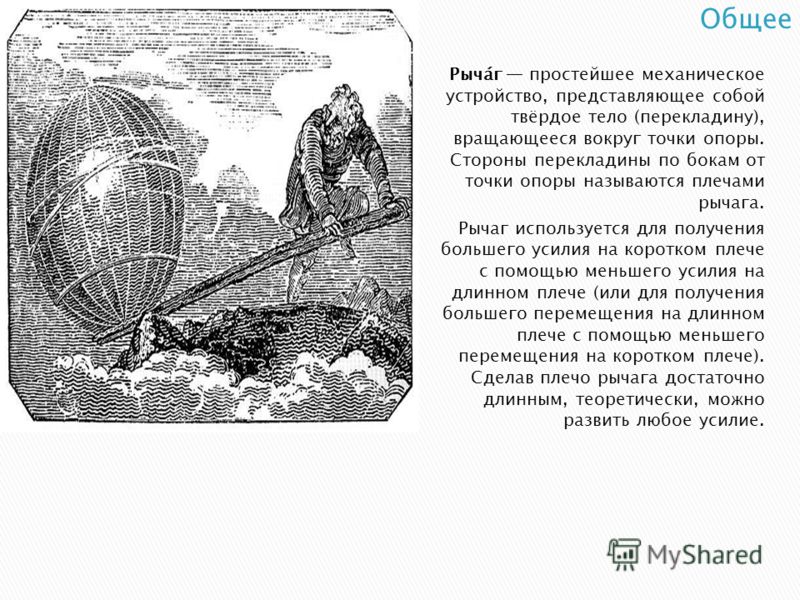
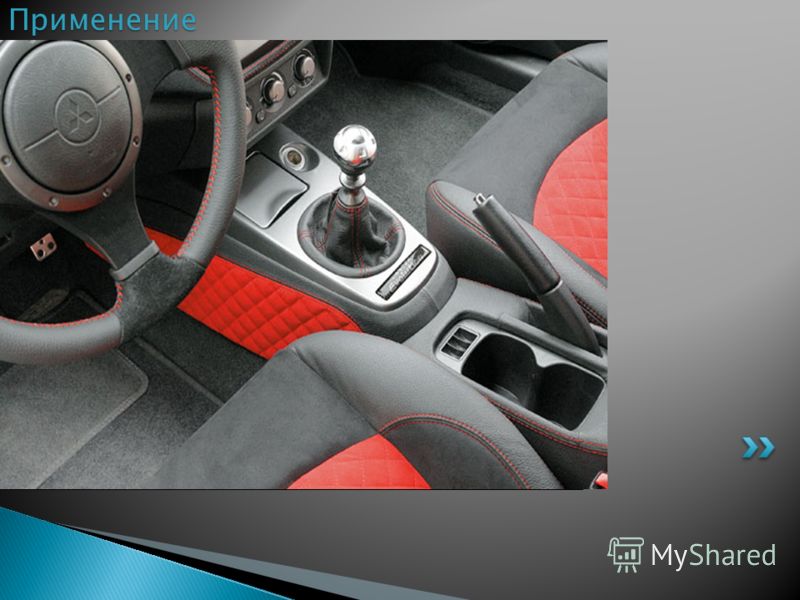

The simplest mechanism. It consists of two wheels connected together and rotating around the same axis. In essence, it is a kind of leverage. Devices using the gate principle: a well gate with a handle, a screwdriver, a bicycle. The system of two gears in mesh, sitting on shafts of the same diameter, is somewhat similar to a differential gate. Gate (to turn, twist, rotate): A simple gate is an ancient mechanism consisting of a machine, in the middle of which there is a shaft that is rotated by means of levers (vymbovka) and thus a rope is wound around it. With the help of this, the gate moves or lifts various weights. The gate is a complex mechanism consisting of a machine tool with two grooved cast-iron shafts rotating at the same time, from the rotation of a gear driven by levers or vymbovki. A temporary gate is a mechanism used to pull simple ships ashore and other heavy loads, consists of a round stump of a tree, which is placed vertically and held in this position with a rope or braces, fixed to the posts, at some distance from the established stump, driven into the ground ; to the very same stump or shaft, a lever is attached that serves to rotate.


The block is a simple mechanical device that allows you to adjust the force, the axis of which is fixed when lifting loads, does not rise or fall. It is a wheel with a groove around the circumference, rotating around its axis. The gutter is designed for a rope, chain, belt, etc. The axis of the block is placed in clips attached to a beam or wall, such a block is called fixed; if a load is attached to these clips, and the block can move with them, then such a block is called movable. The fixed block is used to lift small loads or to change the direction of force.
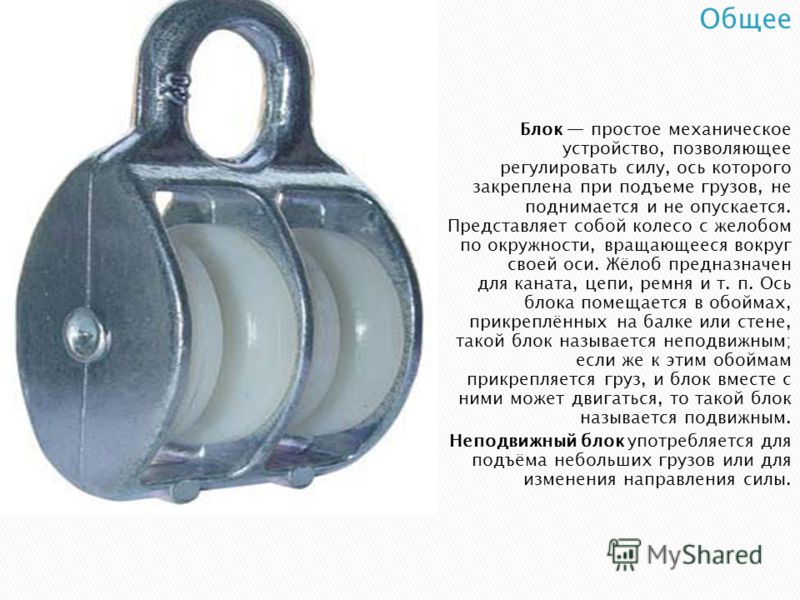
People have long been faced with the limitations of their physical capabilities, so they have always sought to compensate for it with some kind of technical solutions.
One of the first such solutions was the invention of the lever. Now it is impossible to even approximately restore the time and place of the first conscious use of the lever by man. Most likely, the first lever was a stick, with which people pulled out edible roots from the ground or twisted stones. A lever is a rigid rod that can freely rotate about a fixed point called the fulcrum. An example of a lever is a crowbar, a split hammer, a wheelbarrow, a broom. The leverage system is human body, in which the joints serve as fulcrum.
The lever gave a person the ability to perform movements without applying any other force than the strength of his muscles and the weight of his body. The amount of work spent on the performance of any action did not change: a gain in strength turned into a loss in speed - and vice versa.
In any lever there are points of application of forces, a point of application of a load, a fulcrum. The distance along the perpendicular, lowered from the fulcrum to the line of action of the force, is called the shoulder of the force. In order for the lever to be in balance, it is necessary that the products of forces on the corresponding arms be equal.
Depending on the location of the fulcrum, the point of application of the load and effort, there are three types of levers. The gain in leverage is equal to the ratio of the distance from the point of application of the force to the distance from the point of application of the load to the fulcrum.
In a lever of the first kind, called a "beam", the support is located between the points of application of forces. For its balance, it is necessary that the forces are directed in one direction. The gain in power for a lever of the first kind is greater than one.
In a lever of the second kind, called a "wheelbarrow", both forces are applied on one side of the support, but the distance from the fulcrum to the point of application of the force is greater than the distance from the fulcrum to the point of application of the load. For the balance of the lever of the second kind, it is necessary that the forces are directed in different directions. The gain in power for the lever of the second kind is greater than one.
In the lever of the third kind, "tweezers", the point of application of force is between the fulcrum and the point of application of the load. Since the arm of the force in it is less than the arm of the load, then the speed gain in it is greater than unity.
The theory of equilibrium of a lever under the action of gravity was developed by Archimedes. He paid a lot of attention to the levers.
In addition to the lever, since ancient times, people have used other simple mechanisms: an inclined plane, a block, a gate, a wedge and a screw.
An inclined plane is used to move loads to a height without separating them from the support plane. Examples of inclined planes are stairs, escalators and ramps. The gain in force, which is achieved by using an inclined plane, is equal to the ratio of the distance traveled to the height to which the load has risen. Since the first distance is always greater than the second, the inclined plane gives a gain in strength.
A gate is two wheels connected to each other that rotate around a common axis. It is used, for example, to lift a bucket of water from a well. The gate is a lever of the first kind, therefore it can give a gain both in strength and in speed. It depends on the radius of the wheels to which the load and force is applied.
The block is a wheel, along the circumference of which there is a groove designed for a chain or rope. The block is designed for lifting loads. A single block can have a fixed axle (levelling block) or be movable.
The leveling block is a lever of the first kind with a fulcrum on the axis. The force arm and the load arm are equal to the radius of the block, so the gain in strength and speed is equal to one.
In the movable block, the load is located between the fulcrum and the force, so this is a lever of the second kind. The load arm is equal to the block radius, the force arm is equal to its diameter. For a moving block, the gain in strength is two. Equalizing and moving blocks can be combined to increase the gain in strength.
The system of blocks and ropes, designed to increase the carrying capacity, is called a chain hoist.
The wedge, in fact, is a double inclined plane. But if the inclined plane is stationary, and the load moves along it, then the wedge, on the contrary, enters the place where the load is applied. The gain in strength obtained with a wedge is equal to the ratio of the length to the thickness of the wider end. The wedging force acting in the direction perpendicular to the wedge motion can exceed the longitudinal force by 4–5 times. The wedge is used in tools that perform chipping and cutting actions (axe, knife, sewing needle), or as a regulating element. Wedge connections are used to clamp parts. In addition, the wedge serves to transfer forward movement at an angle.
A screw is an inclined plane, a thread wrapped many times around a cylinder. Depending on the direction of inclination, the thread can be left and right. The threads on the screw and the mating part must match. Examples simple mechanisms in which screw threads are used are a bolt and nut, a vice, a jack. Carving, as a kind of inclined plane, gives a gain in strength. The gain in force is equal to the ratio of the distance that the point of application of force travels in one revolution to the distance that the load travels along the axis of the screw. The distance between two adjacent turns is called the thread pitch.






